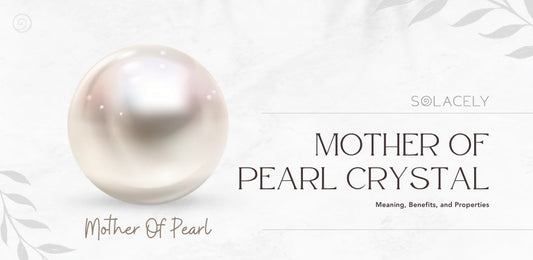Understanding Singing Bowl Frequencies
Before delving into chakra balancing and sound therapy with singing bowls, it's crucial to understand the basics of singing bowl frequencies and what factors influence them.
Basics of Singing Bowl Frequencies
Singing bowls can produce frequencies between 110 and 660 Hz and sometimes even reach the 800s or 900s. The frequency produced by a singing bowl is the rate at which its sound waves vibrate per second, measured in Hertz (Hz).
The frequency is a crucial factor in determining the effect of a singing bowl during meditation and sound therapy sessions. The vibrations created when playing a singing bowl are similar to the frequencies of the brain's alpha waves, which can help relax and focus the brain.
In the context of singing bowl sound therapy, different frequencies can target specific organs, systems, and bodily ailments, helping to alleviate pain and improve overall mindset.
Factors Affecting Singing Bowl Frequencies
The frequency of a singing bowl can be influenced by several factors, including its diameter, density, shape, composition, and thickness of its sides.
For example, a giant bowl may produce lower frequencies due to its wider diameter, while a smaller bowl may produce higher frequencies. Similarly, the density and thickness of the bowl's sides can also affect the frequency it produces. A thicker bowl may produce a lower frequency compared to a thinner one.
Additionally, the type of material used to make the bowl can significantly impact the frequency. For instance, crystal singing bowls produce more precise, smoother, and steadier frequencies than metal.
Understanding these factors can help you choose the suitable singing bowl for your specific needs, whether for meditation, sound therapy, or chakra alignment. It can also aid in understanding your different experiences when using different types of singing bowls.
Types of Singing Bowls and Their Frequencies
In the realm of sound healing, singing bowls play a significant role. They come in different types, each producing a unique frequency and harmonizing with specific chakras. There are two main types of singing bowls: metal singing bowls and crystal singing bowls.
Metal Singing Bowls
Metal singing bowls, also known as Tibetan singing bowls, are traditionally used in Asia for meditation and ceremonial purposes. These bowls are made from alloys that contain five to seven precious metals, each connected to a different planet in our galaxy. The specific metals used and the ratio between them affect the tone, vibration, and sound quality produced by the bowl. The metals typically used include gold, silver, mercury, copper, iron, tin, and lead, each with unique energetic qualities.
Metal singing bowls produce rich, resonant tones that can deeply penetrate the body, assisting in meditation and healing practices. They are renowned for their powerful vibrational frequency, which can help align and balance the chakras, leading to calm and harmony.
Crystal Singing Bowls
On the other hand, Crystal singing bowls are a modern iteration of the ancient singing bowl tradition. They are typically made from pure quartz crystal, known for its clear, consistent tones. The sound frequency of a crystal singing bowl is determined by its size, thickness, and shape.
Crystal singing bowls produce a higher frequency sound than their metal counterparts. These frequencies are particularly effective for working with the higher chakras, promoting a sense of clarity and enlightenment.
Whether you choose a metal or crystal singing bowl, the key is to select one that resonates with you. The bowl's frequency should match the energy frequency you are trying to align or heal. For more guidance on selecting and using singing bowls, refer to our articles on singing bowl chakra alignment and singing bowls for balancing chakras.
Remember, the power of a singing bowl lies in its frequency. Understanding these frequencies and how they relate to your chakras can help you maximize the healing power of your singing bowl, leading to a more profound and compelling singing bowl meditation experience.
Singing Bowl Frequencies and Chakras
As one dives deeper into the world of singing bowls, it becomes evident that the magic lies in the frequencies they produce. These frequencies are believed to profoundly affect the body's energy centers, known as chakras.
Defining Chakras
Chakras are energy centers within the body, each associated with specific physiological and psychological functions. The seven main chakras run along the spine, from the base to the crown of the head. Each chakra has a unique vibrational frequency associated with specific emotions, organs, and aspects of our consciousness.
Connecting Singing Bowl Frequencies and Chakras
The different frequencies produced by singing bowls correspond to different chakras in the body. For example, a singing bowl producing a frequency of 396 Hz is associated with the root chakra, which is linked to grounding and stability. On the other hand, a singing bowl producing a frequency of 528 Hz is associated with the heart chakra, promoting emotional healing and clarity of mind.
| Chakra | Frequency (Hz) | Associated Aspects |
| Root Chakra | 396 | Releasing fear and guilt |
| Sacral Chakra | 417 | Undoing situations and facilitating change |
| Solar Plexus Chakra | 528 | Transformation and miracles |
| Heart Chakra | 639 | Relationships and connections |
| Throat Chakra | 741 | Awakening to spiritual ideals |
| Third Eye Chakra | 852 | Spiritual enlightenment and awakening |
| Crown Chakra | 963 | Connection to the spiritual realms |
The singing bowls can be used for various purposes, including singing bowl meditation, stress relief, relaxation, chakra alignment, and healing. The specific frequency of a bowl can be chosen based on the desired effect or the chakra that needs balancing or healing.
Scientific analyses have confirmed that the waves produced by Tibetan singing bowls match the alpha waves produced by the brain during states of meditation and calm consciousness. These waves induce a feeling of deep relaxation and promote overall wellbeing.
Understanding the connection between singing bowl frequencies and chakras can significantly enhance the experience of using these sacred instruments for healing and meditation. For more information on this, refer to our singing bowl frequencies chart.
Benefits of Singing Bowl Frequencies
Singing bowl frequencies offer many benefits, addressing physical and mental health aspects. S singing bowls can contribute significantly to our overall well-being by leveraging the power of resonance and sound vibrations.
Physical Health Benefits
The sound vibrations emitted by Tibetan singing bowls have been shown to stimulate stress relief and eliminate toxins from the body. They also help ease physical pain in the joints, muscles, and shoulders and pain related to conditions like sciatica, digestive system disorders, headaches, migraines, and spine injuries. The vibrations improve circulation, release tensions and blockages, open the energy flow, and stimulate the immune system, playing a crucial role in physical healing.
Here's a brief overview of the physical benefits of singing bowl frequencies:
- Stimulate stress relief and detoxification
- Ease physical pain, including joint and muscle pain
- Improve circulation and energy flow
- Boost the immune system
Mental and Emotional Health Benefits
In addition to physical benefits, singing bowl frequencies have substantial mental and emotional health benefits. According to a study published by NCBI, singing bowl meditation, significantly reduced tension, anger, fatigue, and depressed mood in participants. The participants new to this type of meditation experienced a more significant reduction in tension than experienced participants. The spiritual wellbeing of all participants significantly increased.
Singing bowl meditation can be a cost-effective and accessible intervention for reducing tension, anxiety, and depression and for enhancing spiritual wellbeing and well-being. This practice doesn't require a steep learning curve or significant discipline, potentially benefiting overall human wellness and health.
Scientific analyses have confirmed that the waves produced by Tibetan singing bowls match the alpha waves produced by the brain during states of meditation and calm consciousness, inducing deep relaxation.
Here's a brief overview of the mental and emotional benefits of singing bowl frequencies:
- Reduce tension, anger, and fatigue
- Decrease depression and anxiety
- Enhance spiritual wellbeing
- Induce deep relaxation and improved concentration
Singing Bowl Selection and Use
Choosing a suitable singing bowl and knowing how to use it effectively is essential for those looking to benefit from the frequencies produced by these unique instruments.
Choosing the Right Singing Bowl
When selecting a singing bowl, it's essential to consider the intended use. Singing bowls can be used for various purposes, including meditation, stress relief, relaxation, and healing. The specific frequency of the bowl can be chosen based on the desired effect.
For instance, if you're interested in chakra healing with singing bowls, choose a bowl that resonates with the frequency associated with a specific chakra. For a comprehensive guide on various singing bowl frequencies and their corresponding chakras, refer to our singing bowl frequencies chart.
Moreover, the material of the singing bowl (typically metal or crystal) might also influence your choice, as the material can impact the sound and vibration produced by the bowl.
Using Singing Bowls for Healing
Singing bowls are often used in sound therapy or sound healing practices, where the frequencies are believed to resonate with and balance the body's energy systems.
The frequencies produced by singing bowls are believed to have various healing effects on the body, mind, and spirit. They can help reduce stress and anxiety and promote overall wellbeing. The specific healing effects of each frequency may vary, with some frequencies being associated with grounding and stability, while others are related to emotional healing and clarity of mind.
Research suggests that singing bowl meditation can significantly reduce tension, anger, fatigue, and depressed mood in participants. It's also been found to increase spiritual wellbeing, making it a low-cost, low-technology intervention for improving human wellness and health.
Here are some ways to use singing bowls for healing:
- Meditation: Incorporating singing bowls into your meditation practice can help create a tranquil atmosphere conducive to mindfulness and relaxation. Check out our guide on singing bowl meditation.
- Chakra Balancing: The frequencies emitted by singing bowls can resonate with the body's energy centers or chakras, promoting balance and harmony.
- Sound Therapy: Singing bowls can be used in sound healing sessions, where their unique frequencies are believed to foster physical and emotional healing. Learn more about singing bowl sound therapy.
Remember, the effectiveness of using singing bowls for healing can vary from person to person, and it's always recommended to approach it with an open mind. The goal is to find balance and harmony within, and singing bowl frequencies can aid in this journey.
Scientific Research on Singing Bowl Frequencies
While the use of singing bowls for meditation and healing has been practiced for centuries, scientific research into the effects of singing bowl frequencies is a relatively recent development. These studies offer fascinating insights into the benefits of singing bowl meditation and the science behind the frequencies produced by these bowls.
Studies on Singing Bowl Meditation
Research has shown that meditation with singing bowls can significantly impact a person's mental and emotional state. In a study published by NCBI, singing bowl meditation was found to dramatically reduce tension, anger, fatigue, and depressed mood in participants when compared to pre-meditation levels. Even those new to this type of meditation experienced a more significant reduction in tension than experienced participants. Spiritual wellbeing also significantly increased in all participants.
The study concluded that singing bowl meditation may be a low-cost and low-technology intervention for reducing tension, anxiety, and depression and increasing spiritual wellbeing. It does not require a steep learning curve or a great deal of discipline, potentially benefiting human wellness and health. You can read more about the practice and benefits of singing bowl meditation on our website.
The Science Behind the Frequencies
The sound vibrations produced by singing bowls have been found to have numerous physical benefits. According to Hotel Bernardin, these vibrations can ease physical pain in the joints, muscles, and shoulders and pain related to sciatica, the digestive system, headaches, migraine, and spine injuries. They also improve circulation, release tensions and blockages, open the energy flow, and stimulate the immune system.
Furthermore, the waves produced by Tibetan singing bowls match the alpha waves produced by the brain during meditation and calm consciousness states. These waves induce a feeling of deep relaxation. This connection between the frequencies of singing bowls and brain waves is a testament to the power of these ancient tools for promoting relaxation and healing.
As science continues to explore the impact of singing bowl frequencies, more people are discovering the benefits of using these tools for meditation and healing. This includes practicing singing bowl chakra balancing and healing with singing bowls. Look at our singing bowl frequencies chart for a detailed understanding of the different frequencies and their associated chakras.













